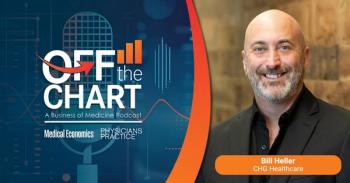
Fighting physician burnout at three levels
The American Medical Association’s practice management tools aim to solve burnout at the level of individual practices and larger health systems.
From yoga to mindfulness meditation, there are no shortage of solutions for physicians experiencing burnout.
However, “to start with individual changes is like telling the canary in the coal mine they should just try harder,” says Christine Sinsky, MD, vice president of professional satisfaction at the American Medical Association (AMA), and a general internist.
She considers physicians “highly resilient” as a group and emphasizes, “If this group is struggling, the environment must be particularly problematic.”
Sinsky believes that change has to happen (and is happening) at three levels:
Individual practices
Change can certainly start with individual physicians. In her own general practice of the past 30 years, where she still works 20% of her weekly hours, she has implemented changes “focused at the level of work flow and task sharing where the day-to-day work happens.” She believes that most primary care practices can save three to five hours of patient care every day by reengineering the way work is done.
To facilitate these kinds of changes, the AMA has created a series of free online
For larger medical systems, she recommends their newest module, called the
This module also includes business calculators that allow a medical institution or team to calculate the time or money they will save with a particular intervention by adding a dollar value to the number of physicians they must replace due to burnout. “That will be permissive to organizations to consider investing in activities that will reduce burnout,” she says.
At the system level
Sinsky traces the “well-intended” move by the Centers for Medicare & Medicaid (CMS) in pushing physicians toward a greater use of technology, especially electronic health records (EHRs), as a major source of burnout.
“I believe physicians are burning out because in the current environment we recognize that we are spending our days doing the wrong work for our patients; work that doesn’t make the patients happier or healthier and work that keeps us from connecting with the reason we went to medical school.”
In her own practice she notes that the new EHR her practice adopted several years ago to conform to CMS’s Meaningful Use program added superfluous work to her day. “It shouldn’t take 32 clicks to order and record a flu shot as it does with my EHR. The daily frustrations with my EHR are related to its design, implementation, and regulation.”
Accountability partners
To this end, getting a handle on the problem of burnout should not only be the job of individual physicians or the medical systems, she says, but other parties that play an integral role, such as CMS, the vendors who create the EHRs and others. “It’s a complicated problem, a big old knot, and no individual physician or individual entity can solve it by itself,” she insists.
Overall, Sinsky is optimistic. “This is a solvable problem. I wouldn’t be devoting my work life to this topic if I felt it was futile.” She believes that by pairing solid data that asks the question “Is this a wise use of the societal investment in the training of physicians?” with resources, tools and innovations like those at the AMA and others cropping up because “the medical community is at the breaking point,” will help advance the conversation.
Newsletter
Stay informed and empowered with Medical Economics enewsletter, delivering expert insights, financial strategies, practice management tips and technology trends — tailored for today’s physicians.








